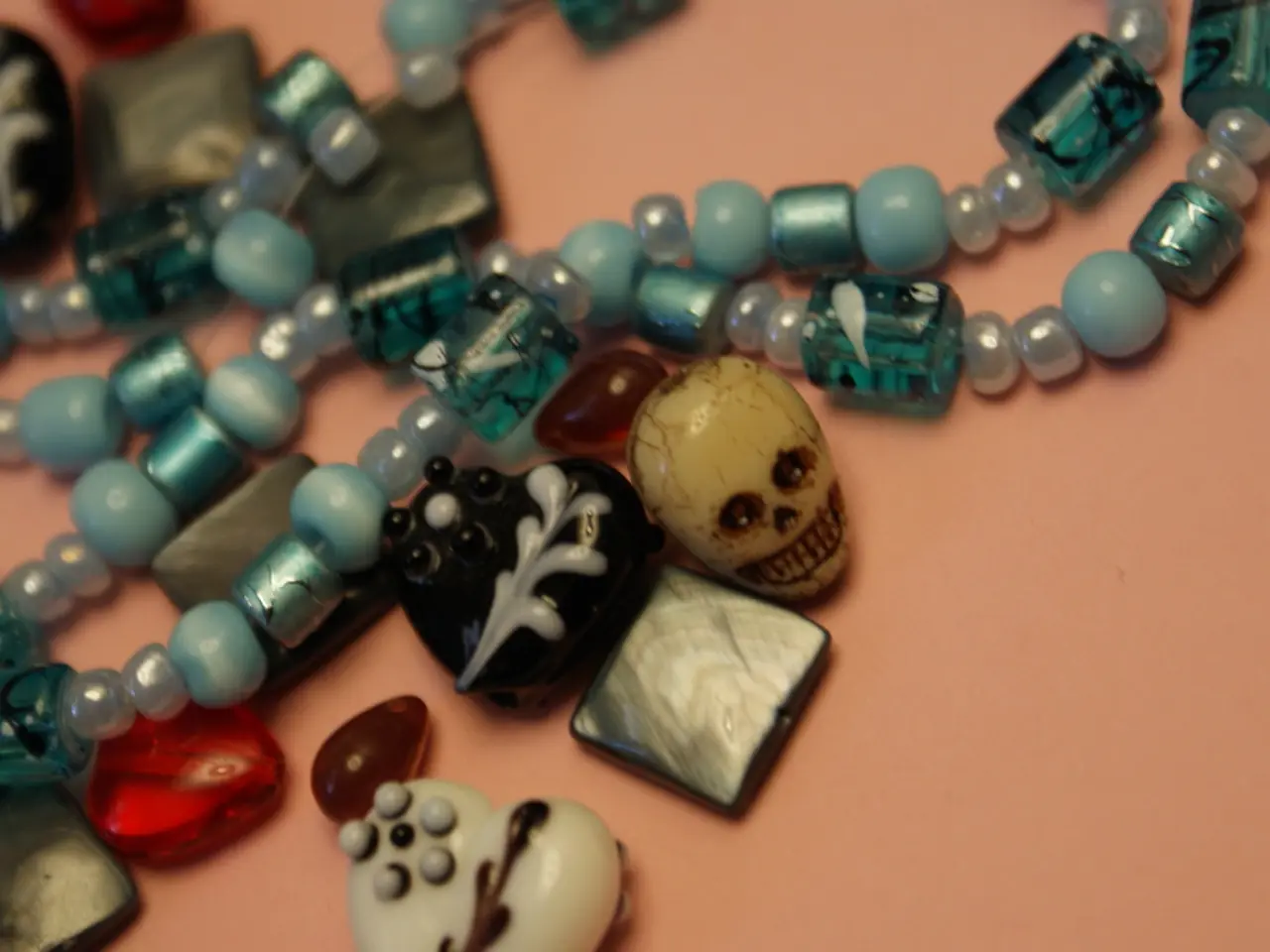Value, Pricing, and Jewelry Insights about Lapis Lazuli
Lapis lazuli, the deep blue gemstone adorning the Pitti Palace in Florence, Italy, has captivated collectors and artists for thousands of years. Its value is determined by several key factors, including color, inclusions, grain and texture, cut and polish, size, and origin.
Color, undoubtedly, is the most critical factor affecting lapis lazuli’s value. The highly prized and most valuable lapis lazuli boasts a deep, intense blue to violet-blue color with a uniform distribution. Stones exhibiting a rich, vibrant blue hue, especially those with a slight violet undertone, are considered the finest and most valuable[1][3].
The presence and type of inclusions significantly impact value. Calcite inclusions (white streaks or patches) tend to lower the value as they lighten the stone and reduce overall color intensity. Conversely, pyrite inclusions (gold-colored flecks) can enhance the appeal and value for many collectors, as they create a desirable contrast, but the amount and distribution are important[1].
Fine-grained, uniform stones that can be polished to a smooth, highly lustrous surface command higher prices due to their superior aesthetic and tactile qualities[1]. The quality of the cutting and polishing work also influences value; shapes that maximize color and luster, and smooth, well-executed polishes increase desirability[1][3].
Larger stones generally fetch higher prices, though size is less important than color and uniformity of quality[3]. The most valuable lapis lazuli comes from the Sar-e-Sang mines in Afghanistan, known for producing some of the finest quality deep blue stones[3].
Archeologists have discovered lapis lazuli imitations dating back to Ancient Egyptian times, such as glass backed with blue paint and blue ceramic materials. Today, modern-era lapis lazuli simulants include enamel, glass, plastic, and dyed gems like howlite and jasper. However, only sodalite is the only natural gemstone readily available in large enough sizes with a deep enough blue to be a convincing lapis lazuli simulant[2].
Jewelers frequently set lapis lazuli in silver and create modestly priced pieces, but there is a growing trend to set fine-quality stones in gold, complementing diamonds or colored gems. Lapis lazuli needs some care as a jewelry stone, with a hardness of 5-6[3].
In conclusion, deep, uniform blue color with minimal calcite and well-distributed pyrite flecks, fine grain, excellent polish, and significant size from a reputable source like Afghanistan are the main factors that determine the value of lapis lazuli gemstones[1][3].
References: [1] GIA (Gemological Institute of America). (n.d.). Lapis Lazuli. Retrieved from https://www.gia.edu/lapis-lazuli [2] International Gem Society. (n.d.). Lapis Lazuli. Retrieved from https://www.gemsociety.org/gems/lapis-lazuli/ [3] National Gem Library. (n.d.). Lapis Lazuli. Retrieved from https://www.ngl.si.edu/gemstones/lapislazuli.cfm
- The deep, intense blue to violet-blue color with a uniform distribution is highly prized in lapis lazuli, making it the finest and most valuable.
- Jewelers often set lapis lazuli in gold and accompany it with diamonds or colored gems, creating more expensive pieces.
- Lapis lazuli needs care as a jewelry stone, given its hardness of 5-6.
- A growing interest lies in integrating lapis lazuli into home-and-garden projects, showcasing its unique beauty and adding a touch of luxury to interiors.
- The beauty and value of lapis lazuli have transcended time, gracing cultures worldwide and becoming a staple in fashion-and-beauty, relationships, travel, food-and-drink, cars, and lifestyle.




